Intel Core i5-13500
Rated: 6.5/10
Intel Core i5-13400
Rated: 8/10
Pros And Cons
| CPU | Pros | Cons |
|---|---|---|
| Core i5-13500 | ✅Better performance. ✅Better price-to-performance ratio. | ❌Slightly more expensive. ❌Higher power consumption. |
| Core i5-13400 | ✅Lower price. ✅More power-efficient. ✅More thermally-efficient. | ❌Worse gaming performance |
- Performance-wise, the Core i5-13500 is 11.1% faster than the Core i5-13400 in 1080P gaming, which is a difference that might swell over the years you have this chip.
- The Core i5-13400 was 41.1% more power-efficient and 16.4% more thermally efficient than the Core i5-13500 across the 1080p gaming benchmarks.
- The Core i5-13500 is about 18% more expensive than the Core i5-13400, on average. Thus, it provides better performance-per-dollar value.
- For most people, the Core i5-13400 has a similar performance to its counterpart at a lower price, which is why we think most consumers should choose this chip if deciding between the two.
Comparison Table
| CPU | Core i5-13500 | Core i5-13400 |
|---|---|---|
| Architecture | Hybrid Core | Hybrid Core |
| Codename | Raptor Lake | Raptor Lake |
| Processing Node | Intel 7 (10nm) | Intel 7 (10nm) |
| Socket | LGA1700 | LGA1700 |
| Supporting Chipsets | Intel 600 Series Intel 700 Series | Intel 600 Series Intel 700 Series |
| L2 Cache | 11.5MB | 9.5MB |
| L3 Cache | 24MB | 20MB |
| Memory Support | DDR5 (up-to 4800 MT/s) DDR4 (up-to 3200 MT/s) | DDR5 (up-to 4800 MT/s) DDR4 (up-to 3200 MT/s) |
| Integrated Graphics | Intel® UHD Graphics 770 | Intel® UHD Graphics 730 |
| Max Operating Temperature | 100°C | 100°C |
| Base Power | 65 watts | 65 watts |
| Boost Power | 154 watts | 154 watts |
| Launch Date | Q1'23 | Q1'23 |
Architectural Differences
- Core And Thread Counts: The Core i5-13500 boasts 14 cores, split into 6 P-cores and 8 E-cores. In contrast, the i5-13400 has 10 cores, halving the E-cores and resulting in 20 threads, 4 fewer than the i5-13500.
- Boost Clock Speeds: Both CPUs share base clock speeds but differ in boosts. The i5-13500 reaches 4.80 GHz (P-cores) and 3.50 GHz (E-cores) with Turbo Boost. The more budget-friendly i5-13400 achieves 4.60 GHz (P-cores) and 3.30 GHz (E-cores).
- L2 and L3 Cache: The i5-13500’s extra cores increase the L2 cache by 2MB to a total of 11.5MB, while the i5-13400 has 9.5 MB. In the L3 cache, the i5-13500 boasts 24MB, surpassing the i5-13400’s 20.
- Integrated Graphics: The i5-13500 has upgraded Intel UHD 770 graphics with 32 execution units and 2 multi-format codec engines, whereas the i5-13400 features Intel UHD 730 graphics with 24 execution units and a single codec engine.
Intel’s Core i5-13500 and Core i5-13400 are two entry-level offerings of their mid-range Core i5 lineup. You might already know the Core i5-13500 is a costlier chip, but does it provide higher value with its higher price? We’ll find out today as we compare the Core i5-13500 vs Core i5-13400.
Core i5-13500 Vs Core i5-13400: Gaming Benchmarks
To test the capabilities of these processors, we have paired them with a graphics card that is sure to leave the chips as the only bottleneck of the system. You can read the specifications of the test bench below:
Test Bench
- GPU: Nvidia GeForce RTX 3090 Ti
- RAM: G.Skill Trident Z5 RGB 32GB DDR5-6600
- CPU Cooler: Arctic Liquid Freezer II 420
- Storage: ORICO M.2 SSD Enclosure and J10 2TB
- Motherboard: GIGABYTE Z690 AERO G
Marvel’s Spiderman Remastered
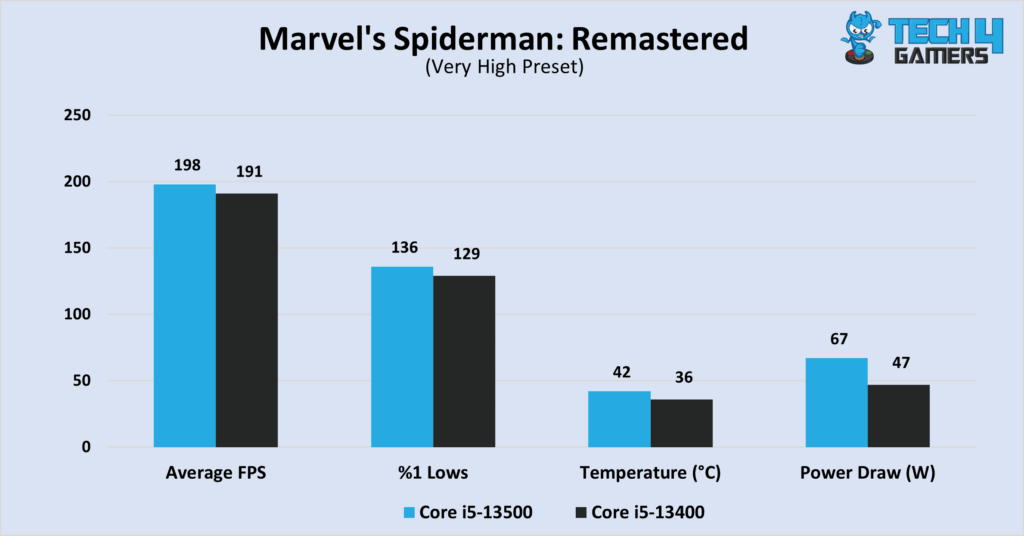
- When we tested Marvel’s Spiderman Remastered on both processors, we found that the Core i5-13500 had an average framerate of 198 FPS, 3.6% greater than the 191 FPS average of the 13400.
- The 1% lows of the 13500 were also higher at around 136 FPS instead of the 129 FPS of the i5-13400, which was around 5.4% slower.
Call of Duty: Modern Warfare 2 (2022)
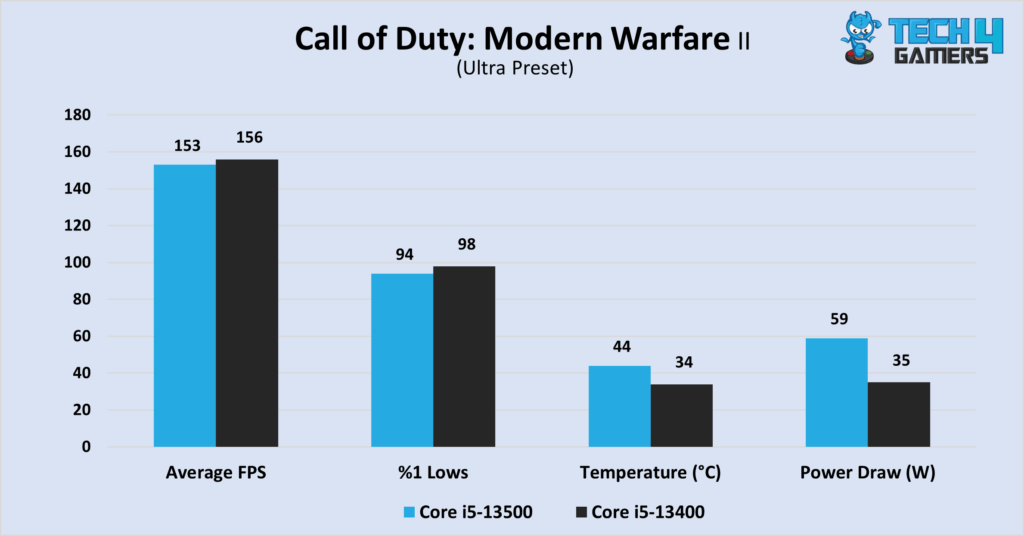
- The narrative was flipped when we tested CoD MW II, with the 13400 leading by almost 2%. It had an average framerate of 156 FPS, which was marginally higher than the 153 FPS average of the Core i5-13500.
- The margin was stretched a bit within the 1% lows. The 13400 led by 4.3%, with a minimum of 98 FPS, while the 13500 had a minimum framerate of 94 FPS.
Cyberpunk 2077
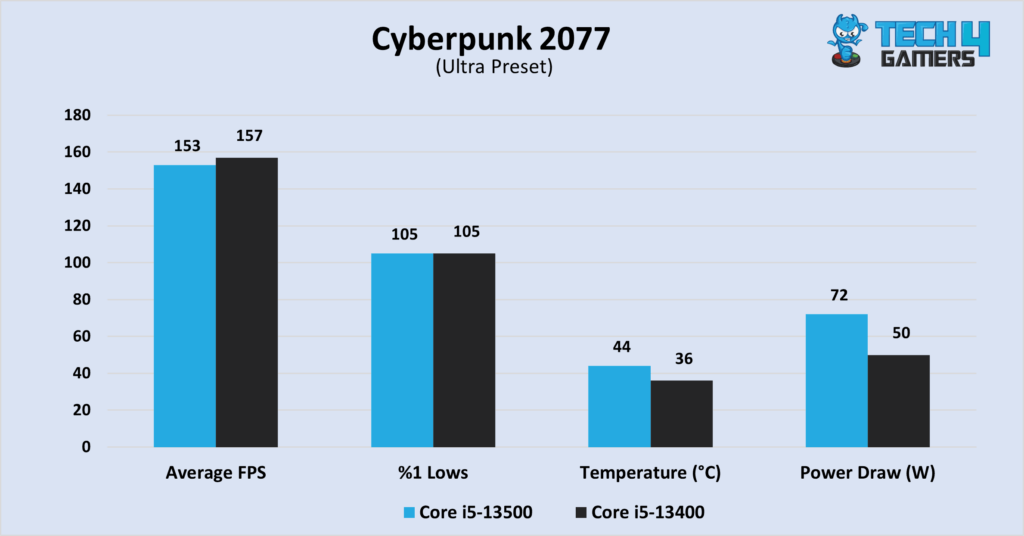
- The lead of the 13400 continued into Cyberpunk 2077, with the processor getting an average framerate of 157 FPS, while its rival was 2.6% slower with an average framerate of 153 FPS.
- The 1% lows remained the same on both chips at 105 FPS.
Overwatch 2
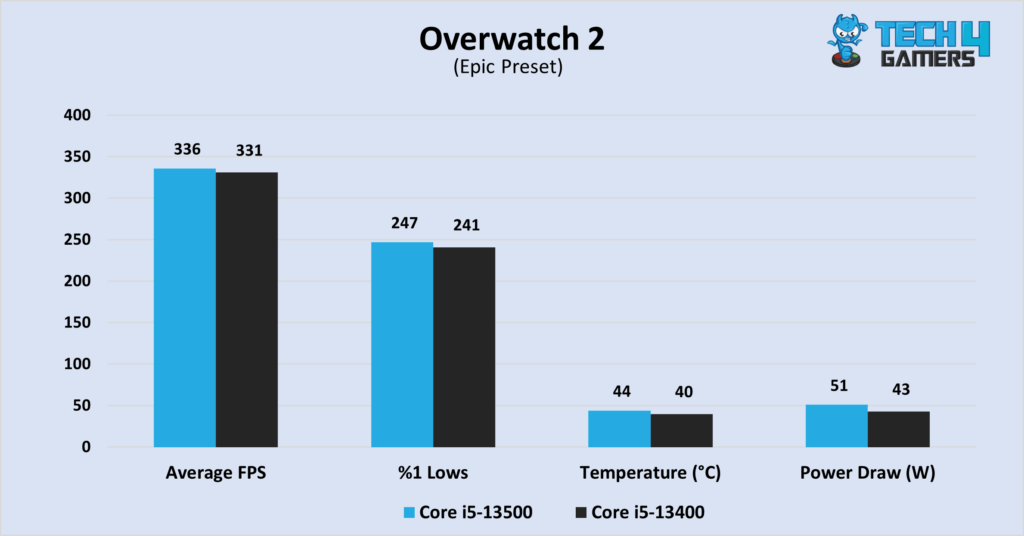
- The i5-13500 was marginally better than the i5-13400 in our test of Overwatch 2. It racks up 336 FPS on average compared to the i5-13400, which scores 331 FPS, leading to a difference of around 1.5%.
- The status quo continued into the 1% lows, with the 13500 getting a minimum framerate 2.5% higher than its counterpart at 247 FPS instead of the 241 FPS of the 13400.
Lost Ark
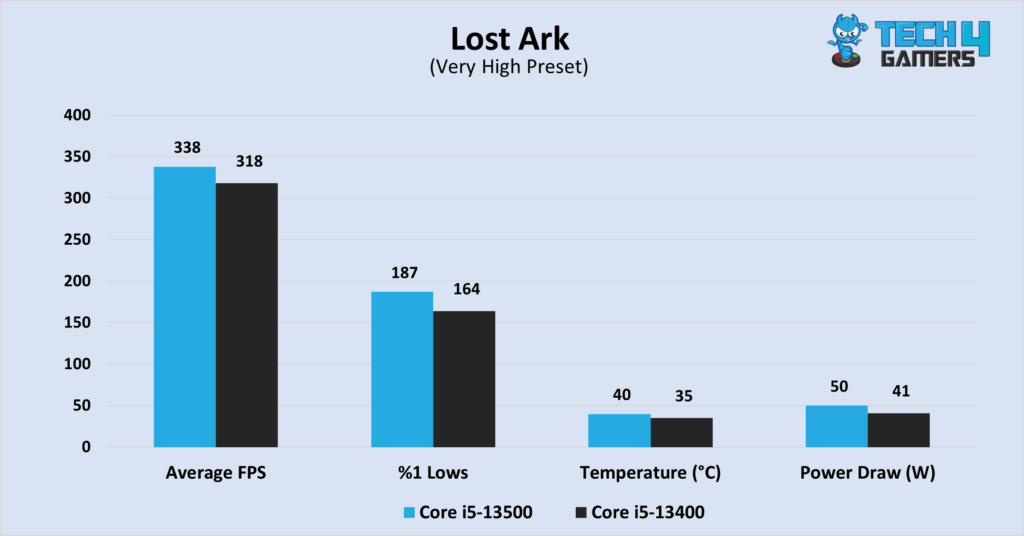
- This game marks another win for the i5-13500K, which scored a framerate 6.2% higher than its rival. It had an average framerate of 338 FSP, while the 13400 had an average framerate of 318 FPS.
- The i5-13500 maintained its lead in terms of the 1% low framerates, scoring 187 FPS. The Core i5-13400 scores 164 FPS, accounting for a rather large 14% difference between the two processors.
Red Dead Redemption 2
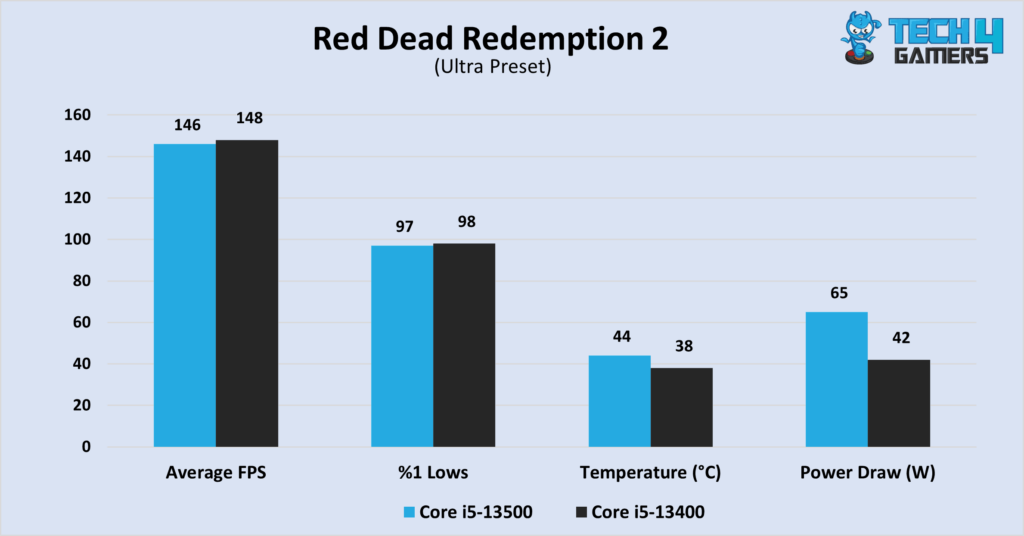
- Punches were traded once again in our test of RDR2, which had an average framerate of 148 FPS on the 13400, while the 13500 had an average of around 146 FPS, making up a 1.4% difference between the two.
- A minuscule frame marked the difference between the 1% low framerate of these processors, with the 13500 getting lows of 97 FPS while the 13400 had lows of 98 FPS.
PlayerUnknown’s Battlegrounds
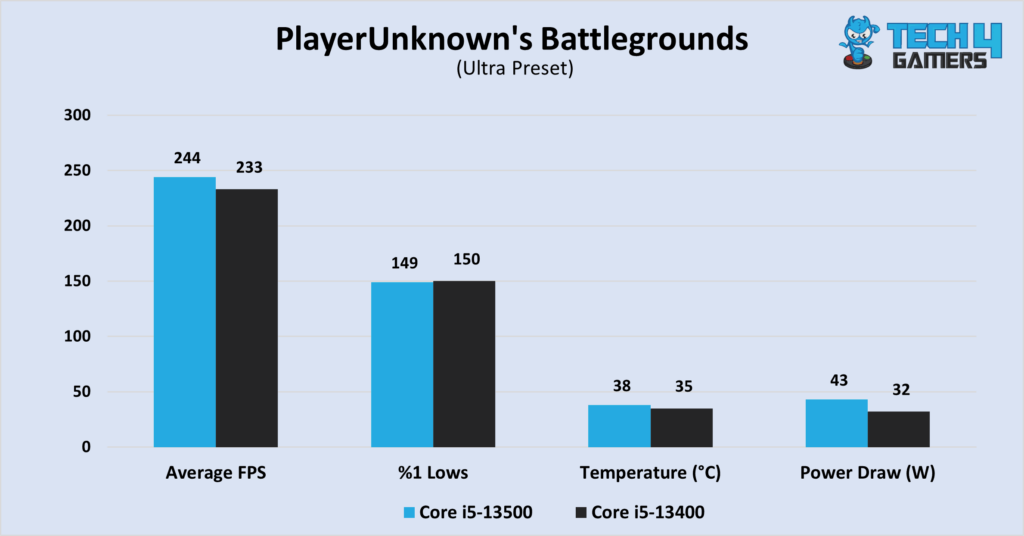
- The i5-13500 averaged a framerate of 244 FPS in our test of PUBG, while the i5-13400 averaged 233 FPS, which marked a 4.7% advantage for the higher-end chip.
- The 1% lows flipped the findings of the average framerates, with the 13400 getting lows of 150 FPS, whereas the 13500 had a minimum framerate of 150 FPS.
League of Legends
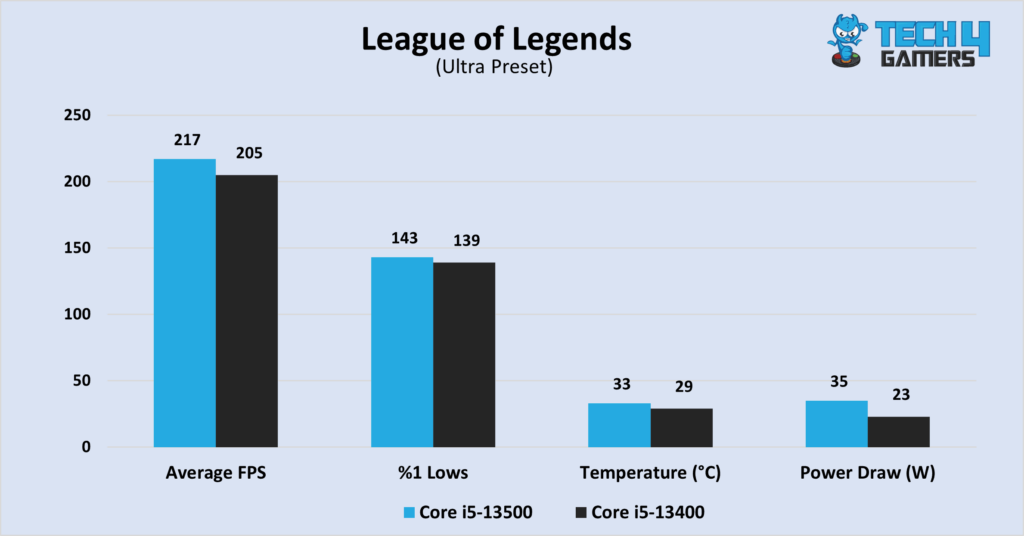
- In our League of Legends test, the i5-13500 secured a lead with an average framerate of 217 FPS. In contrast, the i5-13400 fell approximately 6% behind, averaging 205 FPS.
- In terms of the 1% lows, the i5-13500 had a lead of around 2% with a framerate of 143 FPS, while the i5-13400 had a minimum framerate of 139 FPS.
Overall Gaming Performance
| Featured | Core i5 13500 | Core i5 13400 |
|---|---|---|
| Average FPS | 241 📈 | 217 📈 |
| %1 lows | 144 📉 | 140 📉 |
| Winner: Intel's Core i5 13500 | ||
The i5-13500 outperformed the i5-13400 by 11% in average framerates, mainly noticeable at 1080p with potent GPUs. Minimum framerates had a 3% gap in favour of the i5-13500, likely invisible to most users.
Power Consumption
| Processor | Power Consumption |
|---|---|
| Core i5-13500 | ⚡55.2 |
| Core i5-13400 | ⚡39.1 |
| Difference | 41% |
The Core i5-13400 exhibited 41% better power efficiency than the i5-13500. Both CPUs are power-efficient, indicating that this difference is unlikely to affect gaming experiences significantly. Opting for the i5-13400 could be advantageous if you have strict power constraints.
Thermal Performance
| Processor | Temperatures |
|---|---|
| Core i5-13500 | 🌡️41.1 |
| Core i5-13400 | 🌡️35.5 |
| Difference | 16% |
In our testing, the i5-13400 exhibited a notable 16.4% higher thermal efficiency compared to the i5-13500. This shows the 13400 might be less prone to thermal throttling, which might equivalate the performance between it and the 13500 in some work scenarios.
Price And Value
| Graphics Card | Launch MSRP | Current Price |
|---|---|---|
| Core i5-13400 | 💲221 | 💲189 |
| Core i5-13500 | 💲242 | 💲244 |
| Difference | 9.5% | 18% |
During our research, we found that the price of the Core i5-13500 has not fallen below MSRP yet, with sites like eBay selling this processor for large markups. Newegg had it listed for the above price, whereas BestBuy had listed the 13400 for the mentioned price.
Which One Should You Go For?
Core i5-13400: Being a rather low-end processor, the Core i5-13400 holds itself well in our comparison. It performed respectably in some games, with excellent thermal performance and power efficiency. If you are looking for a budget processor, the Core i5-13400 is a processor that will meet all your needs.
Core i5-13500: This processor was shaping into a great option until we got the price. It has good performance and low power consumption, but being sold for more than its MSRP would not sit right with most consumers. Still, if you need extra performance for a bit more money, the Core i5-13500 is not a terrible choice.
For most users, the Core i5-13400 offers comparable performance to its counterpart at a more affordable price. This cost-effective proposition positions the i5-13400 as a sensible choice for most consumers deciding between the two processors. Still, the Core i5-13500 can do a better job if you want higher performance.
Related Articles
Thank you! Please share your positive feedback. 🔋
How could we improve this post? Please Help us. 😔
[Hardware Reviewer]
Hi! I’m Ali Tauseef, and I have been writing for Tech4Gamers since 2022. I love all things computer hardware but am particularly fond of CPUs and motherboards, and I like to stay up-to-date about the latest advancements in these worlds, and when possible, write about it. When I’m not doing that, I like to get into a little FPS action in CS2 or get lost in the vast world of RDR2.
Get In Touch: ali@tech4gamers.com


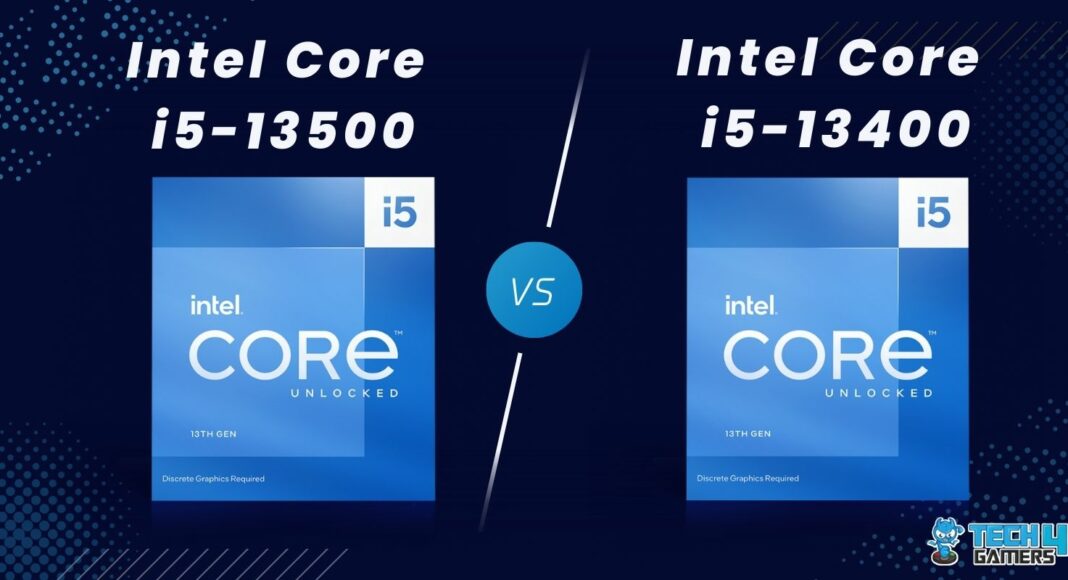
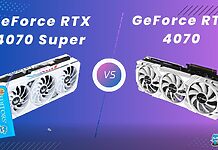
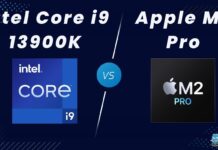
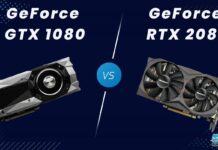
![RTX 2070 Vs RTX 3070 Ti [We Tested 8 Games]](https://tech4gamers.com/wp-content/uploads/2023/06/GPU-Comparison-Template-NEW-2-1-218x150.jpg)
